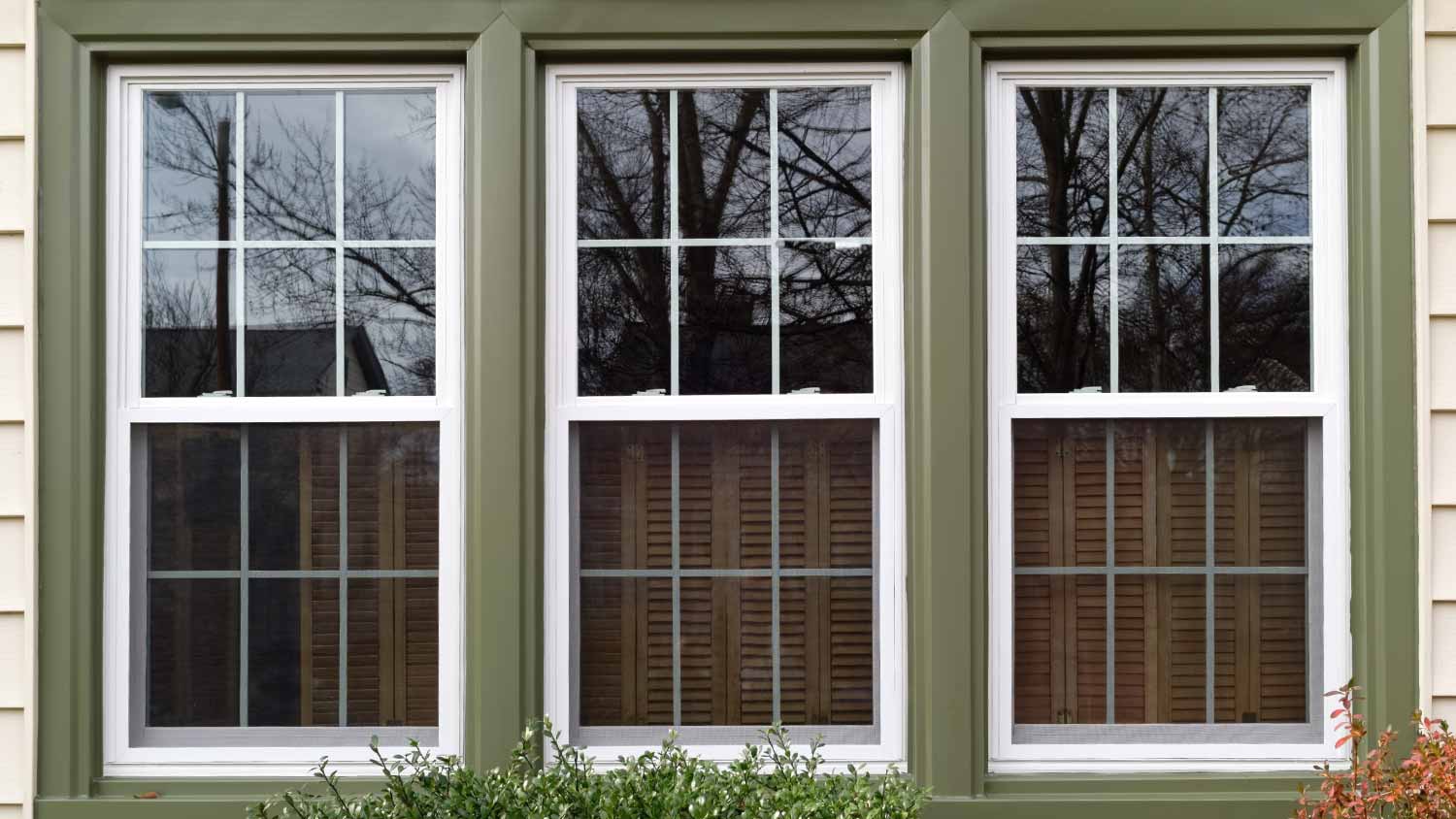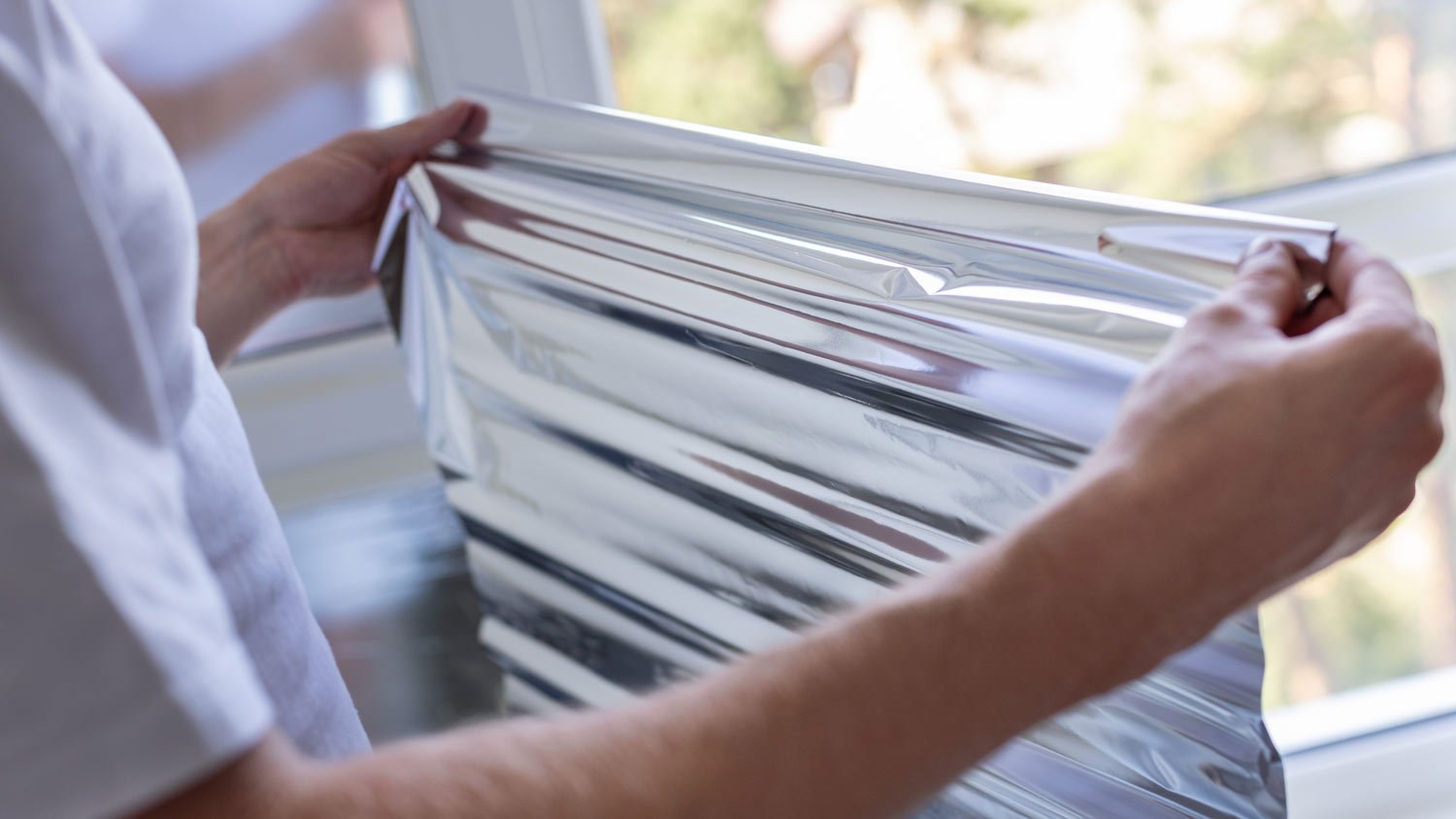
Window replacement enhances your home's appearance and helps to maintain a consistent indoor temperature. Discover the cost of window replacement in Columbus.
Vinyl records may be out of style, but vinyl windows are more popular than ever


Vinyl windows are frames made with polyvinyl chloride (PVC).
They’re known for being low-cost and durable in different temperatures and weather conditions.
Some vinyl windows come with insulation, which can lower energy bills.
They last 15 to 20 years before needing to be replaced.
There are three types of vinyl windows: standard, composite, and engineer.
Whether it’s time to replace your windows or install them for the first time, the type of frame you choose can help you save energy, refresh your decor, and add extra value to your home. Vinyl windows are a popular choice among DIYers, and you’ve likely already seen them in many different kinds of properties over the years. So, what are vinyl windows? Let’s dive into what this popular window frame can provide for your home.

Vinyl windows are windows framed with a synthetic plastic material called polyvinyl chloride, or PVC. They’re known for their affordability, durability, and wide range of styles.
Vinyl windows were popular in the 1960s and 1970s, and after a brief slump, they resurfaced in recent decades as their design improved for better energy efficiency and a more attractive appearance. According to the International Association of Certified Home Inspectors, vinyl windows now make up more than half of residential window sales across the country.
PVC doesn’t easily decay when exposed to outdoor elements, especially moisture from rain and humidity. This makes them a more durable option compared to aluminum windows, which can rust, and wood windows, which can warp over time.
Vinyl is a low-cost material used in all kinds of home products, from flooring to shower curtains. For this reason, vinyl windows are especially cost-efficient for most people’s budgets.
Thanks to vinyl’s flexibility, repairs are rarely ever required. You won’t have to paint or repaint, fill in cracks, or make small fixes to keep your windows in good condition. They’re easy to clean using a washcloth or rag.
Most vinyl windows have built-in insulation within their PVC frame. This insulation helps you stay cooler in the summer and warmer in the winter. Plus, it can lower your energy bills. You can also swap to vinyl to make your existing windows more energy-efficient without buying new windows altogether.
Vinyl windows deteriorate in a way that makes repairs impossible, so you’ll have to replace the window entirely at some point. When researching, make sure the cost of your replacement windows aligns with how long they’re expected to last to make sure you don’t overspend.
While many vinyl windows come in a wide array of colors, they’re difficult to paint yourself. Most paints either don’t stick to PVC or weaken the material. You could try a new window treatment to customize your space instead.
When heat builds up in vinyl, the material tends to soften, warp, or discolor over time. That is important to consider if you live in a southern state with lots of sunlight throughout the year.
Vinyl windows are so popular that they can often vary in quality and appearance. What may cost less upfront may need replacing sooner, and vice versa.
Standard vinyl windows are the simplest, most cost-efficient route. They have a hollow PVC frame with no added insulation. These windows are good for achieving a simple, minimalist look or finding a low-cost solution in the short term, but they could wear down quicker than other vinyl windows.
A composite window blends two or more materials to enhance strength, whether it’s fiberglass and wood, vinyl and wood, or something else entirely. If you need durability and insulation, a composite vinyl frame is probably a safe bet for your home. This type of vinyl window lasts longer than standard vinyl, but it costs more, too.
Engineered vinyl is the highest quality of vinyl windows. The term “engineered” can mean different things depending on the manufacturer you choose. Engineered vinyl typically means the PVC has been specially blended with other materials to make it stronger, meaning it usually comes with other added benefits.
It could be a vinyl exterior over a wooden frame, fade-free glass, or a frame enhanced with titanium dioxide. Engineered vinyl is the best choice for durable, long-lasting windows, but keep in mind that they come with the highest price point.
The other types of replacement windows you’ll see on the market are wood, aluminum, fiberglass, and composite blends (combinations of materials). Wood and fiberglass are considered the highest quality windows for their pleasing aesthetic, built-in insulation, and long-lasting reputation. They’re also the most expensive, averaging $725 to $1,000 per window to install.
On the other end of the spectrum are aluminum windows, which have thin frames that last 20 to 25 years but don’t provide the insulation that wood and vinyl do. Aluminum windows conduct heat in the summer and can rust or corrode if moisture from snow or rain leaks into the frame. Aluminum is a good option if the upfront price is your main concern since it costs an average of $240 per window to install.
Vinyl windows are like the Goldilocks window: they’re low-cost but deliver the energy efficiency and durability that wood windows are known for. Their material is flexible and lightweight, so they’re easy to operate for all ages. They can cost anywhere from $100 to $900 per window to install and last for about 15 to 20 years.
Overall, the cost of vinyl windows is lower than what you would pay for another window material like wood or fiberglass, so they’re pretty much always worth it. That said, there is so much variation in price and quality across different types of vinyl windows that it’s important to narrow down what you need. Talk to a local window pro to find the best windows for your home and budget.
From average costs to expert advice, get all the answers you need to get your job done.

Window replacement enhances your home's appearance and helps to maintain a consistent indoor temperature. Discover the cost of window replacement in Columbus.

Window repair costs in Columbus, Ohio, depend on several pricing factors, including the type and size of the repair it needs and the window itself.

If you're hoping to add a touch of timeless style to your windows, take a look at the cost of stained glass windows and what affects installation costs.

Whether you want protection from the elements or easy curb appeal, use our guide to learn how to build a wood awning frame for your exterior doors and windows.

If you're having problems with window film that include bubbling, peeling, and water spots, come learn about the simplest solutions for making window tint look good again.

Discover the cost to replace window locks. Learn about price factors, labor rates, and tips to save on your window lock replacement project.